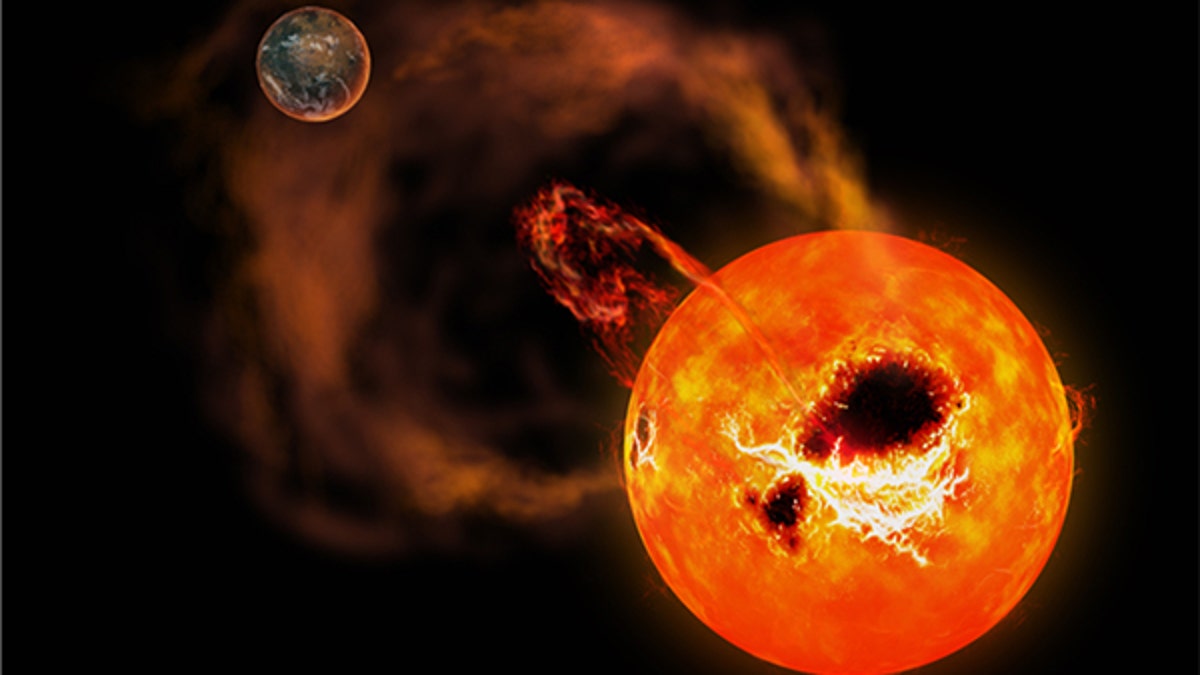Spectacular solar scene: Burst of radiation erupts from sun
Raw video: NASA releases incredible video of solar flare
Astronomers in Japan have spotted a huge “superflare” emerging from a nearby star.
Researchers at Kyoto University and the National Astronomical Observatory of Japan detected 12 stellar flares on AD Leonis, a red dwarf 16 light-years away. A light-year, which measures distance in space, equals about 6 trillion miles.
Red dwarf stars are the smallest and most abundant stars in our galaxy. They are also longest-lived stars.
STUNNING NASA TIME-LAPSE VIDEO SHOWS 10 YEARS IN LIFE OF SUN
One of the solar flares spotted on AD Leonis was 20 times larger than the flares emitted by our own sun, according to the experts, who used the university’s new Seimei telescope to make the discovery.

Artist's impression of the "superflare." (National Astronomical Observatory of Japan)
The research was published in the Publications of the Astronomical Society of Japan.
"Solar flares are sudden explosions that emanate from the surfaces of stars, including our own sun," explained first author Kosuke Namekata in a statement.
77-YEAR-OLD AMATEUR ASTRONOMER HELPS MAKE STUNNING DISCOVERY
"On rare occasions, an extremely large superflare will occur,” he said. “These result in massive magnetic storms, which when emitted from our sun can significantly effect the earth's technological infrastructure."
"Our analyses of the superflare resulted in some very intriguing data," Namekata added.
Specifically, light from excited hydrogen atoms of the superflare displayed an amount of high-energy electrons roughly one order of magnitude greater than typical flares from our sun, the researchers said.
A COMET IS VISIBLE THIS MONTH: NASA HAS THESE TIPS FOR SKYWATCHERS
"It's the first time this phenomenon has been reported, and it's thanks to the high precision of the Seimei Telescope," Namekata explained.
Scientists are hopeful that their research will help them predict superflares and potentially mitigate the damage from electrical storms on Earth. "We may even be able to begin understanding how these emissions can affect the existence -- or emergence -- of life on other planets,” said the study's leader Kazunari Shibata.
In a separate project, NASA released a stunning 61-minute time-lapse video that shows a decade in the life of the sun.
CLICK HERE TO GET THE FOX NEWS APP
The video was created from images taken by NASA’s Solar Dynamics Observatory.
Follow James Rogers on Twitter @jamesjrogers

